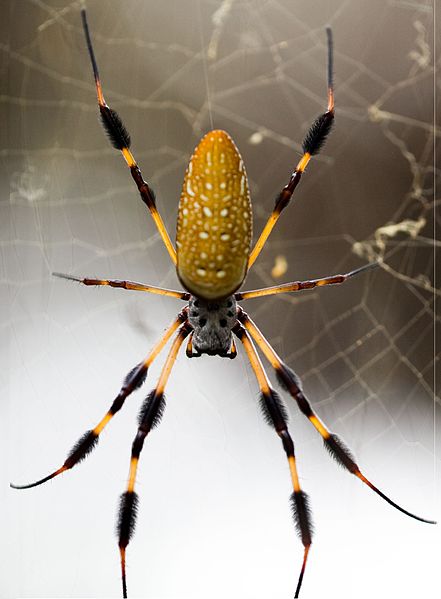Be A Spider (4 Wise Moves for Entrepreneurs)

Even though I’m a writer and creative consultant, I’m a scientist at heart. Most of my work comes from the revelations I have while studying nature and physics.
![By David Maiolo (Own work) [CC-BY-SA-3.0 (http://creativecommons.org/licenses/by-sa/3.0)], via Wikimedia Commons](https://i0.wp.com/www.beyourownanswer.com/wp-content/uploads/2014/06/441px-banana_spider.jpg?resize=145%2C197&ssl=1)
By David Maiolo [CC-BY-SA-3.0 (http://creativecommons.org/licenses/by-sa/3.0)], via Wikimedia Commons
On another tree close by sat an iguana.
Well, I thought, the iguana will have a healthy dinner.
But then I looked at the spider in the web again and realized I was wrong. There were four things that the spider had going for it that every risk-averse entrepreneur could learn.
1. Make your way by your strength.
Most spiders eat what they catch in their web. Others build traps and eat what gets caught there. Here’s the key: What they build sustains them. The most successful entrepreneurs aren’t selling someone else’s products. Build on the things that sustain you.
2. Know what is your bread and butter.
Spiders eat insects. So they build their webs where insects are: flying between trees, or in dusty corners of your house. Spiders test their success by what they catch—so even if a spider mistakenly builds a web across your doorway, once you walk through it, you’ll never see that spider web there again. If you’re not catching anything where you are, move.
3. Take a calculated risk.
Contrary to Spiderman’s web-slinging in the comics, spiders don’t shoot silk out to build webs across a space. They fling themselves out there, spinning silk behind themselves during flight. Even baby spiders build tiny little parachutes in a process called ballooning (aww) after they hatch and fling themselves into the wind to find new homes. They do that so that they can test the viability of the places they attach their web to. You can’t judge your market or your products with theory. You’ve got to get out there. One of the first things I tell my clients to do is look at what’s already working— but to use that to push themselves deeper into their market. I talk about that on my TEDxTalk here.
4. Stay on the Web.
The spider’s best strength is on the web. Its food gets caught there. It has a great vantage point on its environment. And the spider’s legs are so sensitive to it that any movement on the web alerts the spider immediately. That iguana would have to leap off of the tree in order to catch the spider… unless the spider comes off the web. Once you’ve found the work you are good at, get better at it. Use the gifts and strengths you’ve been given to protect yourself.
And here’s a bonus tip!
5. Have faith in the world around you.
Spiders that are ballooning were at first thought to plan their trajectory. After many years of research, scientists concluded that they don’t really have a plan. They just know they need to move, and move farther than they can jump. When you understand who you are, and what your strengths are, don’t be afraid to jump into the world. Wherever you land, you’ll bring all of that with you.
Be a spider. Just don’t get caught in my hair.
Are you an entrepreneur? What’s your web? Let us know in the comments below.
What people are saying: